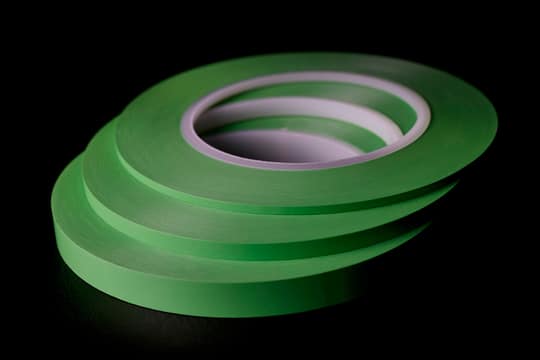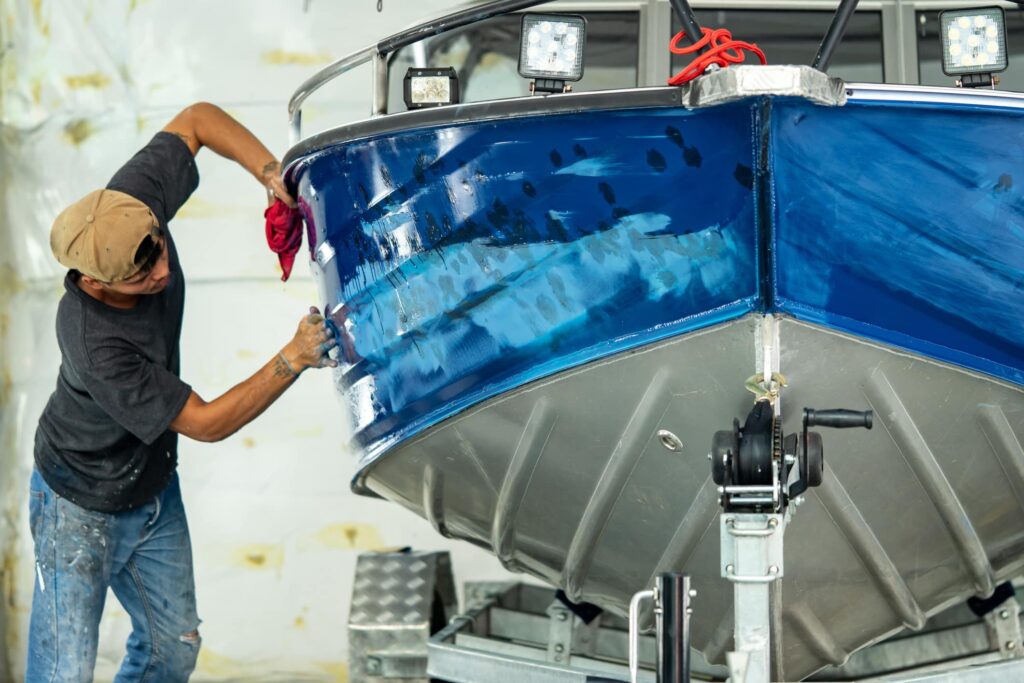Different Tape Properties Explained
At first glance you could be forgiven for thinking tape is tape. Some may look very similar; however a closer look reveals a host of differences in properties such as thickness, width, material and colour. These variations allow us to offer a comprehensive selection of tapes to serve a wide range of purposes.
In this guide, we’ll detail the properties you need to look out for when selecting a tape, and how these properties can be useful.
Tape physical properties
The physical properties of tape can vary massively depending on the job that they’re required to do. Let’s take a look at some of the differences that make tapes stand out.
Carrier/backing material
The carrier, or backing material is the material that the adhesive is applied to. Depending on your use case, it could be either crepe paper, film, cloth, acrylic etc.
It differs based on durability, flexibility, and the ability to see through it. For easy tearing, flexibility, and heat resistance, a crepe tape such as 160°C High Temperature Crepe Masking Tape can be ideal.

Adhesive material
The adhesive material is also incredibly important. Some jobs require instant grab, and others might require pressure to adhere to a surface.
Different adhesives will also cope better under conditions like heat, UV light, and moisture, allowing your specific needs to dictate which tape you want to use.
110°C High Performance UV Masking Tape uses a specially designed adhesive so that it can create a strong bond with a variety of surfaces, even under UV light.
Thickness
The thickness of a tape directly impacts its durability and flexibility. A thicker tape is more rigid and durable than a thinner crepe-style tape, which is why a thicker tape might be used for permanent fixings, such as mounting a number plate or mirrors. For these applications, we recommend our Grey Double Sided Acrylic Tape with a thickness of 1.1mm, offering strong fixings in any conditions.
A thicker tape will prevent things like paint bleed, allowing for clean, sharp lines. However, the thicker a tape is, the more difficult it can be to secure into tight angles. A thinner tape with more flexibility might be required for a perfect finish on your job in these instances. A great option for these jobs is our 120° Lime Precision Masking Tape, which is 0.1mm thick, allowing for more flexibility in application.
Width
The width of the tape you use is dictated by the job that you require it to do. For intricate lines, a narrower tape is ideal, allowing for the smallest of spaces to be masked off. We offer Fine Line Masking Tapes in a range of width options down to as little as 1mm, which can help you complete refinishing jobs in the most intricate areas with the precision required.
For jobs like securing a masking film down, opting for a wider tape would be preferred.

Length
The length of a tape is usually dictated by how much of it is required and how often.
An all-round tape like 80°C Premium Masking Tape comes in rolls of 50m because it’s likely to be used frequently. However, a specialised tape like Fine Line Masking Tape is available in smaller lengths for professionals who might only require it occasionally.
Colour
The colour of a tape is largely down to personal preference. It’s used as a way to contrast with the surface being painted and the paint itself. When painting on a red surface with red paint, using a blue tape might be beneficial to ensure that you can see both the surface being painted and the paint itself.
Tape performance properties
On a technical data sheet, you might come across confusing terms like tensile strength and tack. Let’s take a look at what these terms mean so that you can pick the right tape for your jobs.
Tensile strength
Tensile strength is measured by dividing the peak tension force the sample withstands by its cross-sectional area. Internationally, force is measured in Pascals, which is equivalent to 1 N/M². For JTAPE tapes, N/cm is used.
Tensile strength refers to the maximum force that can be applied to a material before it breaks or stretches. The tensile strength of a material is determined by numerous factors, such as the materials used and the structure of the tape. Materials can be combined to increase tensile strength.
Peel adhesion
Peel adhesion is measured in N/cm, with a higher N number indicating stronger adhesion.
In simple terms, peel adhesion refers to how much force must be applied to an adhesive material before it breaks away from the surface it’s adhered to.
UV resistance
UV refers to how much UV radiation a material can withstand.
With some painting techniques, UV lamps are necessary, which would require a substrate and adhesive that is UV resistant. 110°C High Performance UV Masking Tape uses a specialist formula to ensure that the tape stays secured even under UV radiation.
Density
Tape density is measured in kilograms per metre squared (kg/m³).
The density of tape refers to how tightly packed the fibres of the tape are, usually contributing to adhesion. A denser tape will generally adhere better to surfaces than a less dense one.
Elongation at break
Elongation at break is measured in % (% of elongation vs. initial size when break occurs).
It indicates how much the tape will stretch before it breaks. For some applications, a stretchy material is desirable. For others, like masking tape, that is designed to be easily ripped, this would be a disadvantage.
Temperature resistance
Temperature resistance is typically listed as a temperature, either Celsius or Fahrenheit, along with a period of time.
Heat resistance is particularly important for powder coating, which requires baking and therefore temperature resistance. Green High Temperature Polyester Film Tape is designed to be resistant to temperatures up to 220°C/428°F for up to 30 minutes, making it a must-have for jobs that require baking.
Application temperature
Application temperature is measured in either Celsius or Fahrenheit (°C / °F).
Application temperature refers to the temperature at which the tape is designed to operate. For example, in high heat, some adhesives may struggle to bond with the surface, and the same for extremely low temperatures. In some cases, a relative humidity (RH) value may also be listed.
Tack
Tack refers to the instant grab of a tape to a surface. In some instances, high-tack can be beneficial, but in other cases, it might be best to have a tape that requires pressure or heat to adhere.
Generally, tapes are categorised into high-tack and low-tack tapes.
Moisture resistance

Moisture resistance is crucial for tapes because tape adhesion is greatly impacted when moisture is introduced.
In some applications, such as marine, moisture resistance is crucial to getting the job done. A moisture-resistant tape is still able to adhere even if moisture is present.
That covers the plethora of terminology that you’re likely to encounter within a product’s specification or technical data sheet.
If you’re ready to see which tapes would suit your particular use case, head over to our Products page and dive into the technical data sheets that are available for every product.
For custom tapes and lengths, please use the Contact Us page.


